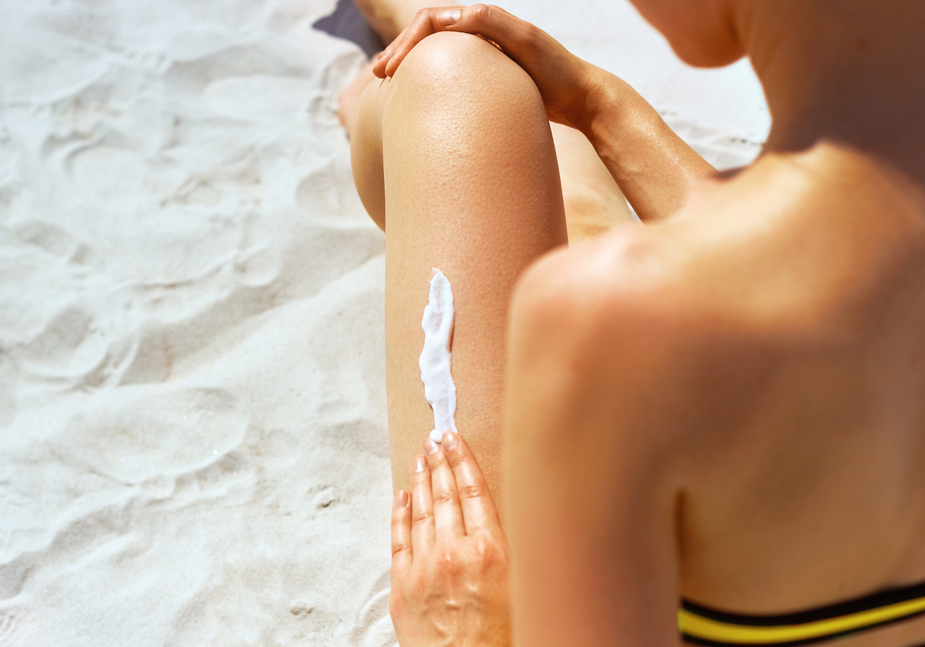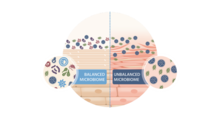
7 Reasons oats for dry, itchy skin are nature's best kept secret
When dry skin is making you wish it was socially acceptable to wear a moisturizing mask to work, it's probably...
It's beginning to look a lot like summer! The sunshine is lasting longer, you can finally ditch the tights in favor of bare legs and that family beach trip is actually starting to look like a reality.
But this season also means that one skincare step rules your regimen: applying sunscreen. Sun protection helps minimize your risk of UV damage, which can otherwise lead to premature signs of aging (like wrinkles) and skin cancer.
Wondering what sunscreen is right for you? Here's everything you should know about the differences between mineral vs chemical sunscreen, so you can choose the best SPF for your skin!
Both options have the same goal — to protect your delicate skin from the glaring sun. They just have different ways of going about doing it, and different formulas to match. Here's what you need to know about mineral and chemical sunscreens.
Mineral sunscreens (also known as physical sunscreens) sit on top of your skin and absorb and deflect UVA and UVB rays, reducing their overall effect. Zinc oxide and titanium dioxide are the only ingredients used here — if you have sensitive skin, none of the other ingredients used in mineral sunscreens have much of a chance of causing irritation.And if you're someone who's interested in a more eco-conscious beauty routine, mineral sunscreen is definitely the way to go.
 But amid all these benefits, there is a bit of a downside: Traditional mineral sunscreen can be annoyingly thick and hard to rub in. Thankfully, newer products typically have smoother formulas, so you can pick your choice off the drugstore shelf with confidence!
But amid all these benefits, there is a bit of a downside: Traditional mineral sunscreen can be annoyingly thick and hard to rub in. Thankfully, newer products typically have smoother formulas, so you can pick your choice off the drugstore shelf with confidence!
Whereas physical sunscreens deflect the sun's powerful rays, chemical sunscreens are significantly more efficient at absorbing them. You'll see ingredients like octisalate and avobenzene on the label.
Chemical sunscreen usually has a thinner formula that's easier to apply and rub in, making it a better option for daily use. That said, chemical sunscreens may bother your skin if you're prone to sensitivity. Try to keep this in mind when browsing the selection of sunscreens for sale.
When it comes to the mineral vs chemical sunscreen debate, there's no clear winner. As long as you're applying (and reapplying) sunscreen daily, you're doing a great job!
Still, there are a couple other factors to take into consideration. First of all, it's a good idea to ensure your sunscreen has broad-spectrum coverage. This means that it protects against both UVA and UVB rays. UVA rays speed up signs of aging, while UVB rays tend to cause burns. Both can contribute to skin cancer, which is why it's impossible to overstate how important it is to protect your skin against both types of rays!
Next, make sure to look at the amount of SPF in the sunscreen. SPF stands for Sun Protection Factor, and it tells you how much sun exposure you can get before your skin will start to burn. The best protection will come from the sunscreen product that you are most comfortable using.The American Academy of Dermatology recommends SPF 30 for daily use. And don't forget to reapply every two hours, or more often if you're swimming or sweating!
No matter what type of sunscreen you opt for, applying SPF is one of the best decisions you can make. Now get out there and enjoy the bright, beautiful summertime sunshine and be sure to pick up AVEENO POSITIVELY MINERAL Sunscreen Broad Spectrum SPF 50 for Body or AVEENO Protect + Hydrate Lotion Sunscreen with Broad Spectrum SPF 70 for Body or AVEENO Protect + Hydrate Lotion Sunscreen with Broad Spectrum SPF 50 for Face for sun protection that perfect for you!

Tu piel es una comunidad diversa de bacterias buenas y malas que componen su microbioma. Una piel con apariencia saludable tiene un microbioma equilibrado y una barrera de la piel preservada. La piel susceptib...